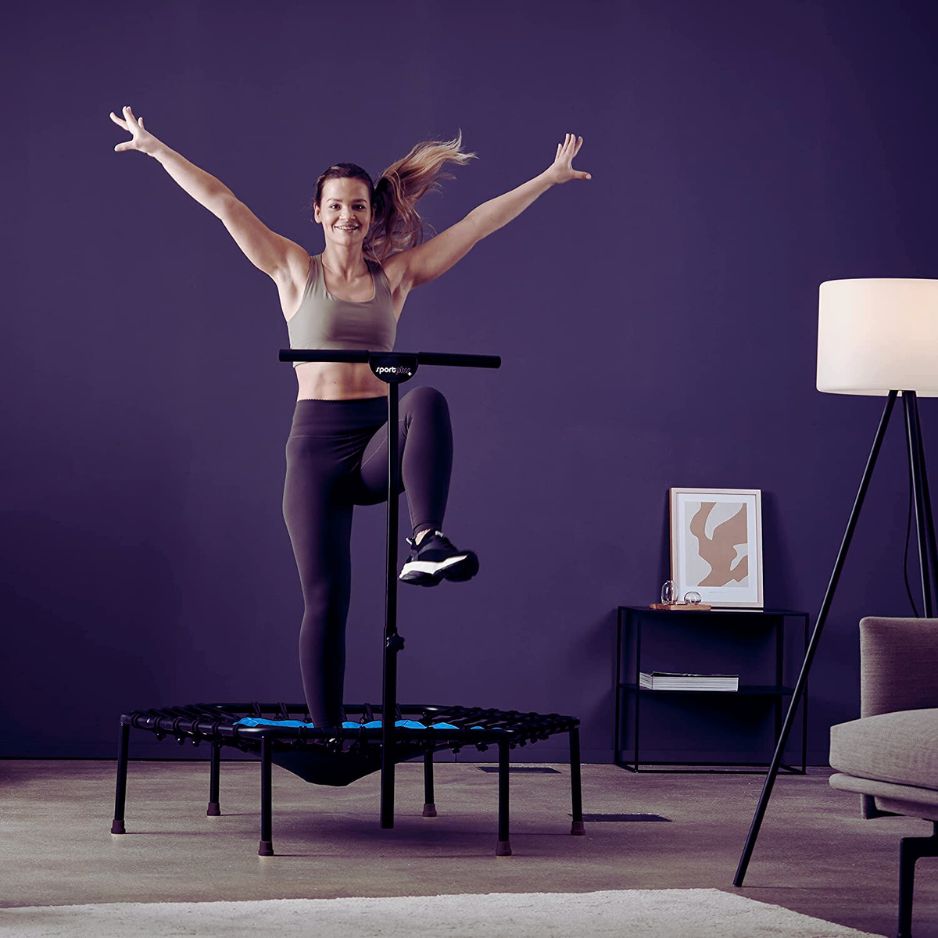Trampolines have long been associated with childhood memories of fun and laughter, but in recent years they have gained popularity as a tool for fitness and health. While most people are aware of the cardiovascular benefits of trampoline exercise, few are aware of its positive effects on the lymphatic system.
The lymphatic system plays a crucial role in the body’s immune system by removing waste and toxins from the body. However, unlike the circulatory system, it lacks a central pump, making it reliant on movement to circulate lymph fluid. This is where trampolines come in. Bouncing on a trampoline creates a gravitational pull that causes the lymph fluid to move around the body, stimulating lymphatic flow and promoting drainage. The result is a stronger immune system, reduced inflammation, and improved overall health.
In this blog post, we’ll dive deeper into the relationship between trampolines and the lymphatic system, exploring the science behind the benefits and the best ways to incorporate trampolines into your routine.
The Lymphatic System – What is it and Why is it Important?
Before we dive into how trampolining can benefit your lymphatic system, it’s essential to understand what the lymphatic system is and why it’s so vital to our health. The lymphatic system is a network of tissues and organs that help rid the body of toxins, waste, and other unwanted materials. It also plays a crucial role in the immune system, helping identify and fight infections and diseases.
However, unlike the circulatory system, which relies on the heart to pump blood throughout the body, the lymphatic system has no such pump. Instead, it relies on the contraction of muscles and movement of the body to circulate lymph fluid. This is where trampolining is a perfect exercise for boosting your lymphatic system.
How Trampolining Can Benefit Your Lymphatic System?
The lymphatic system is a vital part of the body that plays an essential role in maintaining health and well-being. It removes waste and toxins from the body, fights infections, and regulates fluid balance. Here are some of the benefits of the lymphatic system:

Removal of Toxins and Waste
Lymphatic system helps to remove toxins and waste from the body. The lymphatic vessels collect excess fluid and waste products from the tissues and transport them to the lymph nodes, which are filtered and destroyed by immune cells. This process helps to keep the body free of harmful substances that can cause disease.
Fighting Infections
It plays a crucial role in fighting infections. The lymph nodes contain immune cells that can recognize and destroy harmful pathogens such as viruses and bacteria. When an infection occurs, the lymphatic vessels transport immune cells to the affected area, where they can fight the infection and promote healing.
Regulation of Fluid Balance
The lymphatic system helps to regulate fluid balance in the body. It collects excess fluid from the tissues and transports it back to the bloodstream, helping to prevent swelling and edema. The lymphatic vessels also help to maintain the balance of electrolytes and other essential nutrients in the body.
Improved Immune System Function
Lymphatic system is a critical component of the immune system. It helps to produce and transport immune cells throughout the body, which can help to fight infections and diseases. By improving lymphatic function, the body can better defend itself against harmful pathogens and maintain optimal health.
Improved Digestion
It also plays a role in digestion. It helps to transport fat and fat-soluble vitamins from the digestive system to the bloodstream, where the body can use them. Furthermore, the digestive system’s lymphatic vessels can help remove excess fluid and waste products, promoting healthy digestion.
The Science Behind Trampolining and Lymphatic Drainage
The science behind why trampolining is so effective at boosting your lymphatic system lies in the fact that it creates a unique combination of forces that work together to stimulate lymphatic drainage.
At first, the rhythmic bouncing motion creates a pumping action that helps to move lymph fluid through the body. Then, the sudden increase in G-forces when you land creates a compression wave that helps to push lymph fluid out of the tissues and into the lymphatic vessels. Finally, the brief weightlessness at the top of the jump creates a brief period of increased blood flow, which helps to deliver oxygen and nutrients to the cells.
All of these factors work together to create a powerful lymphatic drainage effect that can help to reduce swelling, boost immunity, and improve overall health.
Precautions to Take When Trampolining
While trampolining offers many health benefits, taking certain precautions to ensure that you stay safe and avoid injury is essential.
Warm Up
Always make sure to warm up properly before starting your trampolining workout. This can include stretching exercises, jumping jacks, or other simple movements that help to get your blood flowing and prepare your muscles for exercise.
Proper Attire
It’s also essential to wear appropriate footwear and clothing when trampolining. Avoid wearing shoes with thick soles or heavy boots, as these can interfere with your balance and cause you to fall. Instead, opt for lightweight athletic shoes with good grip and support.
Intensity
It’s important to start slowly and gradually increasing your trampolining workout’s intensity over time. This can help to prevent injury and ensure that your body is appropriately conditioned to handle the demands of bouncing up and down on a trampoline.
Tips for Getting the Most Out of Your Trampolining Workout
Trampolining is an enjoyable and effective way to get a full-body workout. It is a low-impact exercise that can help to improve cardiovascular health, build strength and endurance, and increase coordination and balance. Here are some tips for getting the most out of your trampolining workout:

Start Slowly
If you are new to trampolining, starting slowly and gradually building up your endurance and intensity is significant. Begin with simple movements such as bouncing and jumping and gradually add in more advanced movements as your skills improve.
Incorporate Resistance Training
Adding resistance training to your trampolining workout can help to build strength and increase the intensity of your workout. You can incorporate resistance bands or ankle weights into your trampolining routine to add resistance and challenge your muscles.
Vary Your Movements
To get the most out of your trampolining workout, it’s essential to vary your movements and engage different muscle groups. Try different jumps such as tuck jumps, pike jumps, and straddle jumps, as well as twists and turns to engage your core muscles.
Focus on Form
Proper form is essential when trampolining to prevent injury and maximize the effectiveness of your workout. Keep your knees slightly bent, engage your core muscles, and use your arms for balance and momentum.
Mix It Up
To prevent boredom and keep your workouts challenging, mix up your trampolining routine. Try different exercises, switch up your routine, and challenge yourself with new movements and routines.
Stay Hydrated
Trampolining can be a strenuous workout that can cause you to sweat and lose fluids. Staying hydrated is essential by drinking plenty of water before, during, and after your workout.
Trampolining Equipment and Accessories to Enhance Your Workout
To enhance your trampolining workout, there are a variety of different equipment and accessories that you can use. For example, ankle weights or resistance bands can be used to add extra resistance and challenge to your workout. Foam pads or balance boards can also improve balance and stability, while hand weights can target the upper body and add extra intensity to your workout.
Various trampolines are available on the market, ranging from small, portable models to large, professional-grade models. When choosing a trampoline, it’s essential to consider factors such as size, weight capacity, and safety features.
How to Incorporate Trampolining Into Your Regular Exercise Routine?
If you’re looking to incorporate trampolining into your regular exercise routine, there are various ways. For example, you can try adding a trampolining session to your weekly workout schedule or use a trampoline as a warm-up or cool-down exercise before or after other forms of exercise.
You can also try incorporating trampoline exercises into other forms of exercise, such as yoga or Pilates. This can help to add variety and challenge to your workouts while also targeting different muscle groups and improving overall fitness.
Conclusion
Trampolining can have a positive effect on the lymphatic system. The repetitive bouncing motion that occurs when trampolining can help to stimulate the lymphatic system and promote the flow of lymph fluid throughout the body. This can help to boost the immune system, reduce inflammation, and improve overall health and well-being.
Moreover, trampolining is a low-impact exercise that is gentle on the joints and can provide a fun and effective way to improve cardiovascular health, strengthen muscles, and increase coordination.
Taking proper precautions when trampolining is vital to prevent injury and ensure a safe and enjoyable experience. By following the guidelines and tips outlined in this article, individuals can safely and effectively incorporate trampolining into their exercise routine and reap its many health benefits.
Frequently Asked Question
How does trampolining help boost the immune system?
Trampolining can help boost the immune system by promoting the flow of lymph fluid, which carries immune cells throughout the body. This can help improve the body’s ability to fight off infections and diseases.
Is trampolining suitable for all ages and fitness levels?
Trampolining can suit all ages and fitness levels, but it’s essential to consult a doctor before beginning any new exercise routine. Also, it’s essential to start slowly and gradually build up the intensity and duration of the workout.
Last Updated on August 30, 2023

